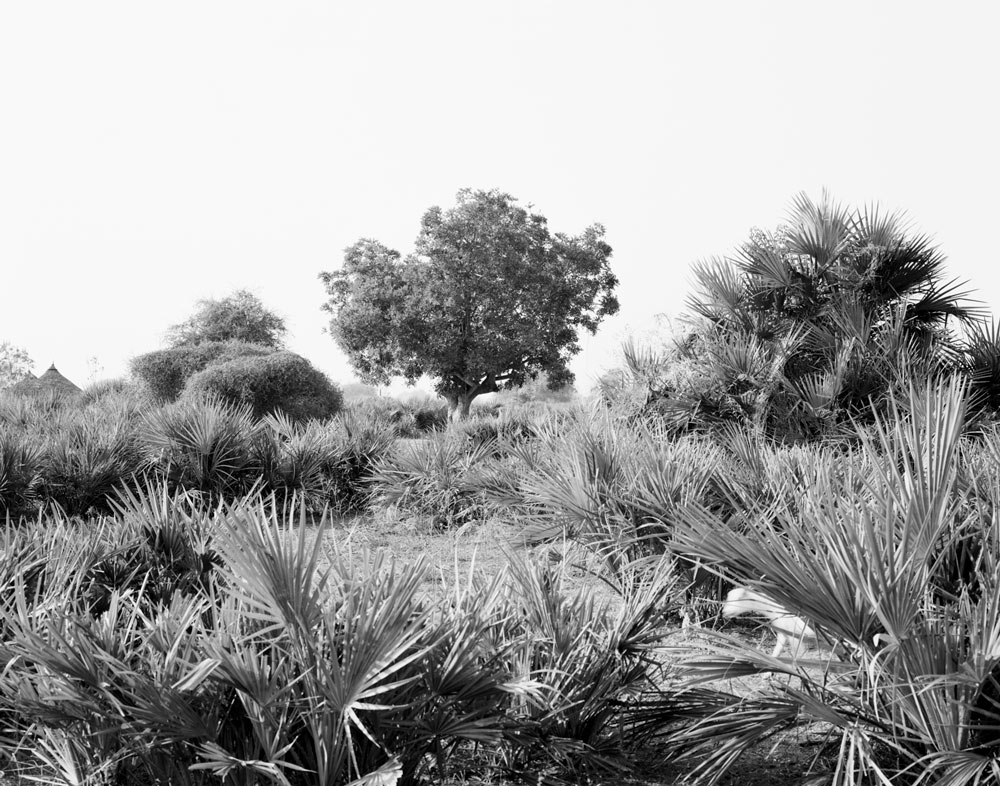ISLAND
MUNDARI AND NUER
The Mundari live for months with their cattle in an isolated place outside the village, the cattle camp, where several villages often bring their herds of cattle together. Sticks in the ground for tethering the cattle, steaming piles of dung and living structures characterise the visual structure when the animals have left the area during the day. The Mundari protect their furniture and valuables by fastening them to the upper end of wooden poles. They themselves sleep on wooden plank beds next to them, which act like islands in the cattle camp, whose dynamics are determined by the herds of cattle leaving in the morning and returning in the late afternoon. Last but not least, the camp serves to defend the herds against raids by neighbours, and weapons are also available.
The counterpart to the cattle camp culture is the village as a permanent settlement. There are permanent huts, food stores and structures with a ritual function such as painted poles hung with cattle horns and graves. The inhabitants commute back and forth between the two locations.




